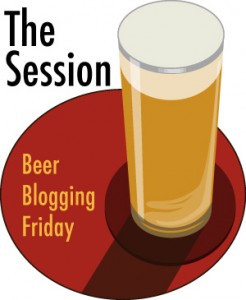
From Derek Harrison’s Beer Blog, It’s Not Just the Alcohol Talking, we get another hot topic in the beer world. Will the bubble deflate or is their a bubble at all. The bubble not being housing or internet stocks but our beloved craft beer. From checking out Harrison’s blog and reading his post for Session # 79, it should be a well moderated debate and not just provocative for the pleasure some take in “keepin’ it real.”
Here is the assignment:
Session #80 – Is Craft Beer a Bubble?
It’s a good time to be in the craft beer industry. The big brewers are watching their market share get chipped away by the purveyors of well-made lagers and ales. Craft breweries are popping up like weeds.
This growth begs the question: is craft beer a bubble? Many in the industry are starting to wonder when, and more importantly how, the growth is going to stop. Is craft beer going to reach equilibrium and stabilize, or is the bubble just going to keep growing until it bursts?
You hear the tone and see the head shake and you know you are in the presence of a fatalist. We have all run into the guy who says that we have too many breweries. It is unsustainable for the customer base. So on, ad infinitum. Why would someone be negative when we are living in a golden age of great beer?
Me, I see the pint glass as more than half full though. I am not so naive as to expect double digit growth forever, in fact, I expect a shakeout or two in the next few years but nothing on the scale of the microbrewery implosion that we have already bounced back from remarkably.
I base my non bursting bubble assumption on the fact that there are states in America still playing catch up to craft beer and many countries around the world yet to enter the game too.
The southern states are just now easing laws on brewing. Texas is a big and only partially tapped market. Same with my current city, Los Angeles. We are just now getting a head of steam going in the new brewery department. There is room to grow. It may not be in markets like Portland or Denver but even those cities are creating more beer each year.
Spain, Greece and the Scandanavian countries could easily enter the game as well. Not to mention China and its current wine buying binge that could translate into beer too. Just think if it became cool in China to buy up Black Tuesday from The Bruery. It might end of up $100 a bottle.
Another aspect that craft beer has going for it is that the customer base is strong, vocal and entrenched. Poor quality beer will not be bought out of pity, so some places will have to change or go bye-bye. Just like in any niche market And it means, also, that current craft consumers ain’t gonna buy Bud-Miller-Coors ever again. So even if the momentum completely shudders to a stop everywhere and at once, we will be in a 10% to 15% craft market depending on which stats you want to believe.
And some pundits may mark a certain percentage as the end of the line or the bottlecap ceiling but that says they can tell you that the market will top off at point A is only making a guess. Whose to say that the market isn’t 25% or 30%? I see the Big Brewers losing market share and I don’t see them making craft beer so I see potential in the 85% of America that doesn’t buy it yet. I was just at a bar in North Hollywood that has a good set of regular non-rotating handles. They do occasional special nights but nothing fancy to make a beer snobs heart pitter patter. But two of the bartenders admitted that they drank crap before and that they can’t now. These little leaks of customers will continue as far as I can see.
In the end my slightly educated guess is that craft beer will keep growing.






